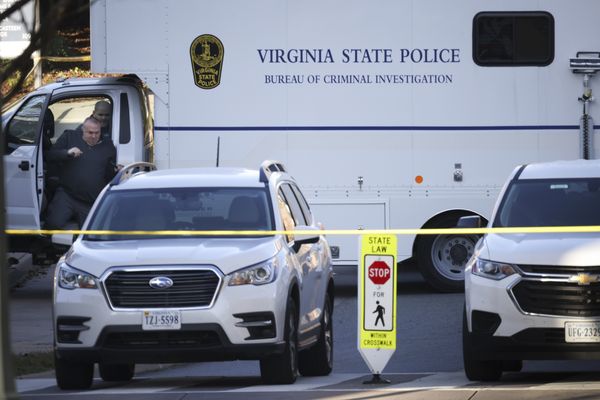
The humanitarian crisis in Gaza is set to worsen once again as deliveries of aid and fuel to the Palestinian territory slow to a trickle in the wake of Israel’s two-week-old ground offensive in the southern city of Rafah.
The UN has suspended food distribution in Rafah owing to a lack of supplies and insecurity, the world body said late on Tuesday, and delivery operations from the new US-funded floating pier have also been halted after desperate people seized most of the shipment offloaded on to trucks on Saturday, an incident in which one person was killed.
Since 10 May, shortly after Israel seized control of the Rafah crossing with Egypt, through which the majority of aid to Gaza flows, only about three dozen trucks have successfully been delivered via the nearby Kerem Shalom crossing, and only about a quarter of the allowed fuel has been delivered since the Israeli operation began.
The ongoing fighting means that both Kerem Shalom and Rafah are effectively blocked, and perishable food and medicine is piling up on the Egyptian side of the border. Egypt and Israel have traded blame over a failure to negotiate Rafah’s reopening, which has also prevented sick and injured Palestinians from leaving the strip for treatment elsewhere.
“It is better than before in the market right now, there are bananas and peaches, and the prices are more normal, but we are worried that it will not last,” said Mohammed Azaiza, an accountant from Deir al-Balah whose home was destroyed and is now sheltering with his family elsewhere in the central city.
“There are so many people to feed now too. Thousands of people who were in Rafah have come to Deir al-Balah.”
Limited distributions of reduced food parcels are ongoing in central Gaza, said Abeer Etefa, a spokesperson for the UN’s World Food Programme (WFP), but the agency’s food parcel supplies are expected to be depleted within days.
“Humanitarian operations in Gaza are near collapse,” she said, and if food and other supplies do not resume “in massive quantities, famine-like conditions will spread”.
The UN says 1.1 million people in the coastal strip – nearly half the population – face catastrophic levels of hunger, and that the territory is on the brink of famine.
About 1,200 people, mostly civilians, were killed in Hamas’ surprise assault of 7 October, with a further 250 taken hostage, and about 35,000 people have been killed in the ensuing war in Gaza, according to the Palestinian health ministry, which does not differentiate between civilian and combatant deaths.
Israel has come under global pressure to allow more supplies into the besieged coastal enclave, including an unprecedented rebuke from the chief prosecutor of the international criminal court, who this week said he was seeking arrest warrants for the Israeli prime minister, Benjamin Netanyahu, and the defence minister, Yoav Gallant.
Karim Khan alleges that the Israeli officials are guilty of war crimes and crimes against humanity including causing starvation as a method of war and the denial of humanitarian relief supplies.
Just 50 trucks of aid a day can reach the most in-need areas in the north of Gaza through the newly opened Erez West crossing between the territory and Israel, UN humanitarian chief, Martin Griffiths, said last week, and fewer than 100 have entered for the last two weeks – far below the threshold of 600 a day that relief agencies say is needed.
Efforts spearheaded by WFP and USAid, the US government’s foreign aid wing, are under way to reassess logistics and security precautions, along with exploring alternative delivery routes within Gaza.
Meanwhile, a spokesperson from the US defence department acknowledged that there have been challenges transporting and distributing aid from the newly constructed pier, ordered by Joe Biden two months ago amid criticism that the US was either unable or unwilling to convince its Israeli allies to allow sufficient aid into the besieged territory.
Many humanitarian organisations were critical of the US project, saying that while all aid was welcome, surging food through land crossings was the only way to curb growing starvation. About 500 tonnes of aid, or 90 truckloads, a day was initially expected to be processed, increasing to 150 trucks a day at full capacity.
“We fully appreciate and recognise that land routes are the optimal way to get aid,” said Pentagon spokesperson Maj Gen Patrick Ryder. “It’s also important to remember that this is a combat zone and that it is a complex operation.”
Israel launched a major military offensive against Hamas forces in Rafah on 6 May, despite warnings from the US that attacking Rafah, where more than 85% of Gaza’s population of 2.3 million people had sought shelter, was a “red line”. The offensive also helped to collapse foundering ceasefire talks brokered by the US, Egypt and Qatar.
More than 900,000 people have now fled Rafah, according to the latest UN estimates, complying with instructions issued by the Israeli military.
All were told to move to a designated “expanded humanitarian zone” along Gaza’s southern coast, where almost no provision has been made for shelter or food distribution. Medical and aid officials describe “horrific and dehumanising conditions” in the zone, with acute shortages of shelter, water, food and sanitation.
Heavy fighting continues to rage in the Rafah area, the last pocket of Gaza to face a ground offensive, with air and artillery strikes reported by residents on Wednesday. Ground battles are also ongoing in northern and central parts of the strip such as Jabalia and Zeitun, where Hamas forces have regrouped.
The World Health Organization has said northern Gaza’s last two functioning hospitals, al-Awda and Kamal Adwan, are under siege by Israeli forces, and more than 200 patients are trapped inside.







